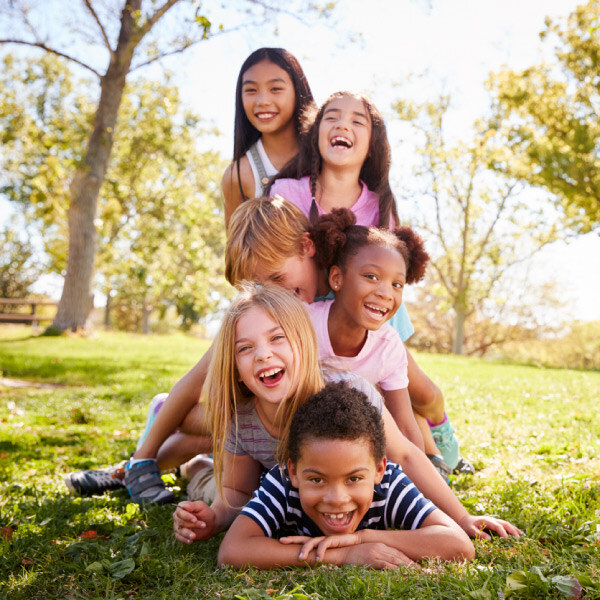
Fun Activities
Playing is one of the most important things you can do with your child because play is essential for your child’s brain development. The time you spend playing together gives your child lots of different ways and times to learn.

Different Types of Play
Unstructured Play
Unstructured, free play is the best type of play for young children. This is play that just happens, depending on what takes your child’s interest at the time. Free play isn’t planned and lets your child use his imagination and move at his own pace. Examples of unstructured play might be:
- Creative play alone or with others, including artistic or musical games
- Imaginative games – for example, making cubby houses with boxes or blankets, dressing up or playing make-believe
-
Exploring new or favorite play spaces like backyards, parks, or playgrounds
You can be part of your child’s unstructured play – or not. Sometimes, all you’ll need to do is point her in the right direction – towards the jumble of dress-ups and toys on her floor or to the table with crayons and paper. Sometimes, you might need to be a bit more active.
For example, ‘How about we play dress-ups? What do you want to be today?’.
Structured Play
Structured play is different. It’s more organized, happens at a fixed time or in a set space, and is often led by a grown-up. Examples of structured play include:
- Water classes for toddlers, or swimming lessons for older children – you might see these as important lessons for your child, but he might just think they’re fun
- Storytelling groups for toddlers and preschoolers at the local library
- Dance, music or drama classes for children of all ages
- Family board or card games
Structured and unstructured play can happen indoors or outdoors. Outdoor play gives your child the chance to explore, be active, test physical limits – and get messy!
How Play Develops with Your Child
As your child grows, the way he/she plays will change – they’ll get more creative and experiment more with toys, games and ideas. This might mean they need more space and time to play. Also, children move through different forms of play as they grow. This includes playing alone, playing alongside other children and interactive play with other children.
-
Here are some ideas your toddler might enjoy:
- Big and light things like cardboard boxes, buckets or blow-up balls can encourage your child to run, build, push or drag.
- Chalk, rope, music or containers can encourage jumping, kicking, stomping, stepping and running.
- Hoops, boxes, large rocks or pillows are good for climbing on, balancing, twisting, swaying or rolling.
- Hills, tunnels or nooks can encourage physical activities like crawling and exploring.
If you put on some favorite music while your toddler plays, he can also experiment with different sounds and rhythms. You might also like to sing, dance and clap along to music with your child.
-
Here are some ideas to get your preschooler’s mind and body going:
- Old milk containers, wooden spoons, empty pot plant containers, sticks, scrunched-up paper, plastic buckets, saucepans and old clothes are great for imaginative, unstructured play.
- Simple jigsaw puzzles and matching games like animal dominoes help improve your child’s memory and concentration.
- Playdough and clay help your child develop fine motor skills.
- Favorite music or pots and pans are great for a dance concert or to make up music.
- Balls and frisbees can encourage kicking, throwing or rolling.
- Trikes, scooters, wagons, riding toys develop muscle strength, balance and coordination
- Scavenger hunts
- Board Games and changing up board games— How To Adapt Everyday Games To Include Movement
- Messy play
- Park play
- Obstacle course
- Simon says
- Yoga
- Dancing
- Playing in the rain
When encouraging your child to kick or throw, try to get her to use one side of her body, then the other.




